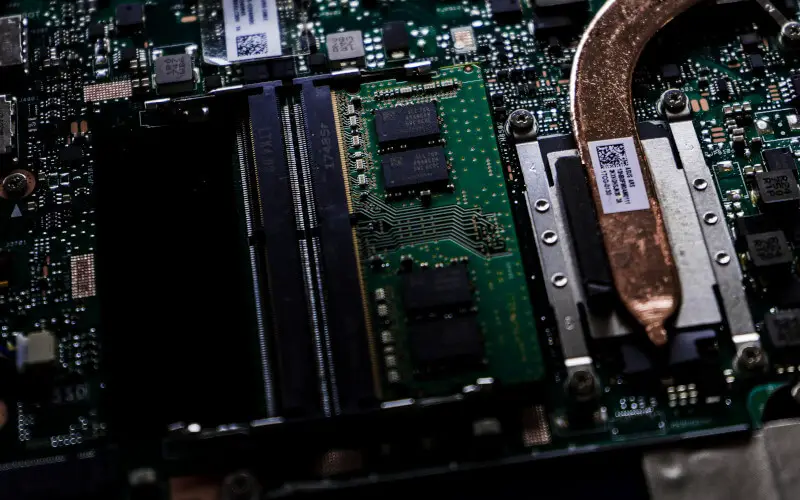You’ve probably heard the terms BIOS and firmware thrown around a lot. But do you know the difference between the two? And more importantly, do you know when to use each one?
In this article, I’ll discuss the differences between BIOS and firmware and their respective uses. By the end of this article, you should clearly understand the distinction between the two and be able to use them confidently in your tech endeavors.
BIOS
BIOS stands for Basic Input/Output System. It is a type of firmware stored on a chip on your motherboard. It is the first thing that runs when you turn on your computer and is responsible for booting the operating system.
The BIOS performs several important tasks. First and foremost, it checks the system’s hardware to ensure everything is functioning correctly. This includes checking the CPU, RAM, hard drive, and other peripherals.
Once the hardware has been checked and initialized, the BIOS loads the bootloader from the hard drive. The bootloader is a small program responsible for loading the operating system.
In addition to booting the operating system, the BIOS provides several settings you can configure. These settings include the time and date, boot order, and power management options. You can access the BIOS settings by pressing a specific key during the boot process (usually F2 or Del).
What Are The Four Functions Of A BIOS?
Here are the four main functions of the BIOS:
- Hardware initialization: When you turn on your computer, the BIOS performs a power-on self-test (POST) to check that the system’s hardware is functioning properly. This includes checking the CPU, RAM, hard drive, and other peripherals.
- Bootstrap loading: Once the hardware has been initialized, the BIOS loads the bootloader from the hard drive. The bootloader is a small program responsible for loading the operating system.
- System configuration: The BIOS also provides several settings you can configure, such as the time and date, boot order, and power management options. You can access these settings by pressing a specific key during the boot process (usually F2 or Del).
- Power management: The BIOS also controls the system’s power management functions, such as controlling power states and the system’s wake-up events.
In addition to these four main functions, the BIOS may include other features and capabilities, depending on the specific motherboard and BIOS version.
Firmware
Firmware is a type of software that is stored on a hardware device. It controls the device’s behavior and enables it to perform its intended functions.
Firmware is commonly found in devices such as routers, printers, and other types of hardware. It is also found in software applications, such as the firmware for a keyboard or mouse.
One key difference between BIOS and firmware is that firmware is not limited to being stored on a motherboard. It can be stored on any hardware device, whereas BIOS is specific to the motherboard.
Why Is It Called Firmware?
The term “firmware” is a combination of “firm” and “software.” It means the firmware is software stored on a hardware device rather than a traditional computer.
The term “firmware” was coined in 1967 to describe the software used to control the early minicomputers and mainframes of the time. These computers used microcode, low-level code stored in ROM (read-only memory) chips. This microcode was used to control the computer’s hardware, much like how firmware is used today.
The term “firmware” was used to distinguish this low-level code from the higher-level software that ran on top of it, such as the operating system and application programs. It was called “firmware” because it was considered more permanent and less changeable than traditional software.
Today, “firmware” refers to any software stored on a hardware device and used to control its behavior. This includes everything from the firmware in your router to your printer’s firmware in your keyboard.
Updating BIOS and Firmware
It is important to keep your BIOS and firmware up to date to ensure your system runs at its best. New versions of BIOS and firmware can fix bugs, add new features, and improve the overall performance of your system.
Updating BIOS is usually a straightforward process, but it can be risky if not done correctly. Following the manufacturer’s instructions carefully is essential, as a broken BIOS update can render your system inoperable.
Updating firmware is similar to updating BIOS, but the process can vary depending on the device. Some devices have a built-in feature for updating firmware, while others require you to download and install the update manually.
Conclusion
BIOS and firmware are both types of software that play essential roles in your system. BIOS is responsible for booting the operating system and providing basic system configuration options, while firmware controls the behavior of hardware devices.
It is vital to keep BIOS and firmware up to date to ensure your system runs at its best. Just follow the instructions provided by the manufacturer when updating either one, as a mistake can have serious consequences.
I hope this article has helped clear up any confusion you may have had about the differences between BIOS and firmware. With this knowledge, you can confidently use these tools in your tech endeavors.






